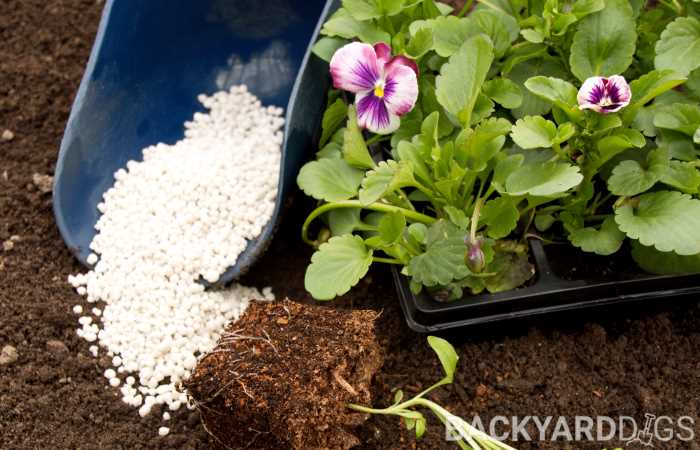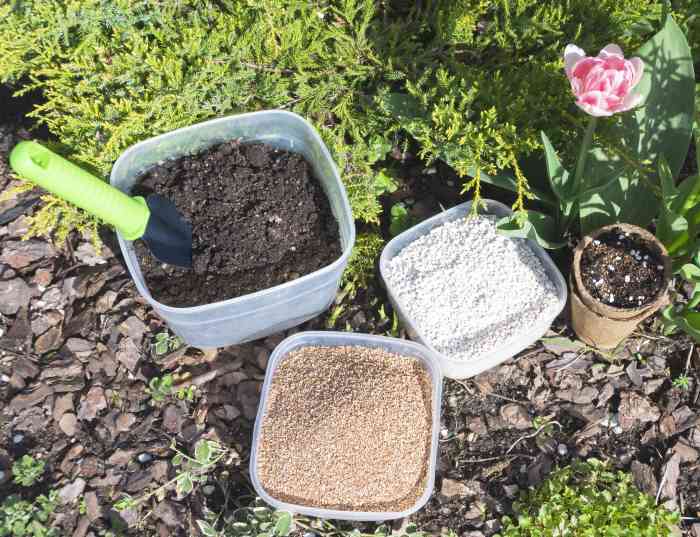While many people have heard the word Perlite, most know very little about it.
What is Perlite, and what purpose does it have?

I must admit that for a long time, I thought the white bits in potting soil were styrofoam, but now know it’s Perlite!
In this guide, I explain different uses for Perlite, what it’s made of, and the pros and cons of using it. I also talk about whether or not Perlite is organic, and the best ways to use it in the garden.
Once you understand more about Perlite, you can see the benefits of having it on hand for your home gardening projects.
What Is Perlite Used For?
Perlite has a wide range of uses in many commercial, industrial, and horticultural products.

The main features of Perlite that make it a highly sought-after ingredient is it’s density to weight ratio, and that the material is inexpensive to manufacture and purchase.
Commercially, Perlite is an ingredient in products like:
- Plaster, mortar, and concrete
- Insulation
- Pharmaceutical and food industry filters
- Ceiling tiles
- Foam composites
- Abrasives
- Kitty/pet litter
Perlite use in horticultural operations include:
- As a soil amendment
- Filtration alternative to diatomaceous earth
- Hydroponics
- Growing medium for plant cuttings
Perlite is becoming more and more popular for use in commercial and industrial products since the particles do not break down or decompose over time. The stability of the material makes it ideal for long-term consistency and results.
Perlite is non-combustible, and also a thermal and noise insulator, which increases its value inside commercial construction products.
The density and other attributes of Perlite make it ideal for gardening and farming applications. Keep reading, as I talk more about the benefits of Perlite for home gardeners in the sections below.
What Is Perlite Made Of?
Perlite begins life as naturally forming igneous (volcanic) rock. The rock comes from open-pit mines in the United States and in countries around the world.

Volcanic rock is mainly silica (SiO2) with bits of aluminum oxide, calcium, iron, oxides of sodium, potassium, and magnesium. This form of volcanic rock has high water content and has a glass-like appearance.
A load of rock is sent to a crusher then on to a tall furnace, where the material drops toward a heat source that reaches 1,600 degrees Fahrenheit.
Once the rock particles hit the right temperature, the water inside causes the rock to burst, much like popcorn. The rock turns from a glossy brown or black to a gray or white color.
The particle expands anywhere from four to 20 times its original size. The Perlite is now very lightweight yet porous and able to hold a large quantity of water weight.
Is Perlite Safe To Handle?
Perlite comes from inert volcanic rock. The granule form of Perlite is not harmful in any way to handle nor toxic to ingest.
If you have exposure to a high amount of Perlite dust, you may experience eye irritation or respiratory trouble. Always use a dust mask and protective eyewear to prevent issues.
Pros And Cons Of Using Perlite
Below I highlight the many advantages of Perlite when put to use in the home garden. I also note some disadvantages you need to take into consideration as well.
Pros:
- As a growing medium, it encourages quick seed germination
- Helps alleviate soil compaction
- Inert and sterile which helps protects plants from disease
- Does not decompose in soil
- Non-toxic
- Low cost
- A bag of Perlite can last indefinitely in your shed
- Adds aeration to soil
- Improves soil drainage
- Almost pH neutral
Cons:
- Can hold too much water in the soil
- It’s a non-renewable resource
- Does not contain/add nutrients
- Perlite dust could cause irritation to lungs and eyes
As you can see, Perlite offers many more advantages than disadvantages. I find using Perlite beneficial in many instances whether I am potting indoor plants or working to amend the soil in my planter beds.
Perlite’s insulating qualities also help regulate soil temperature swings. The granules hold water, but also maintain air pockets, so soil aeration levels remain healthy.
Is Perlite Organic?
When I hear the word organic, I immediately think of something healthy, environmentally safe, and free of chemicals. So, when I hear that Perlite is “inorganic,” I did some research to learn more.
What I find is that in chemistry, an organic compound is one that contains carbon. There is no carbon in Perlite; hence, it being “inorganic.”
Does this mean you can’t use it when growing fruits and vegetables you wish to sell as organic?
Don’t worry. The National Organic Standards Board allows Perlite as a growing medium or soil additive in certified organic gardening or agricultural programs.
While the mineral does undergo a physical alteration during the heating process, the chemical components do not change. Therefore, Perlite is an inorganic substance that is ideal for organic growing practices!
Why Does Perlite Come In Different Sizes?
Perlite is sold in course, medium, and fine grain. Each size provides a specific benefit when gardening.
Course-grain Perlite is best for plants that need high levels of moisture. The larger particles retain more moisture, which slowly releases into the soil as plant roots absorb the water.
I stick to medium-grade Perlite since it works well for all my needs, from amending soil to increase aeration to using it on its own to plant succulents.
Fine-grade Perlite is best for use when growing orchids and other plants where you desire better control of the moisture balance in the soil.
How To Use Perlite For Gardening
Perlite is so common in pre-mixed gardening soils and sold alone in bags at home improvement stores for good reason; the stuff works!
Here are the top uses for Perlite in the garden:
GERMINATING SEEDS – HYDROPONICS
Perlite is a wonderful growing medium perfect for filling pots to start seeds or grow cuttings.
Coarse-grade perlite is an ideal growing medium for hydroponic garden systems.
The sterile nature of the granules, along with the consistent drainage/water-retention aspects, allows plants to develop robust root systems that efficiently uptake nutrients.
The sterile nature of Perlite keeps fungus, mold, or other diseases from taking hold and damaging your plants.
DRAINAGE
Adding Perlite to your soil helps tremendously to reduce the risk of root rot due to overwatering.
While the granules hold some water, they still allow for excess water to drain off. This feature is especially great for those who live in regions with high rainfall.
Another bonus is that the addition of lightweight Perlite to your containers keeps the overall weight down. If you move your potted plants about your patio or yard often, your back will appreciate it!
AERATION
Perlite keeps potting or garden soil from compacting, so air pockets remain.
The granules will never dissolve or lose shape, so root systems can branch out through the looser soil texture while getting sufficient oxygen.
SOIL PH AMENDMENT
The nearly neutral pH of Perlite works to reduce acidity when you need to amend poor soil quality.
Adding Perlite to balanced soil will not change the pH level.
In Summary
The best gardens start with superior soil that offers an adequate level of oxygen and good drainage. Perlite is an ingredient that can help you achieve that goal.
You can use Perlite alone or add it to existing soil. Either way, I hope this guide shows you how it improves soil quality and the ability of the root system to supply nutrients to the plant.
Perlite is a cost-effective and straightforward way to improve the health of your indoor potted plants, your vegetable garden, and your home’s outdoor planters.
Perlite is a key “secret” ingredient all homeowners should keep in their gardening shed!










